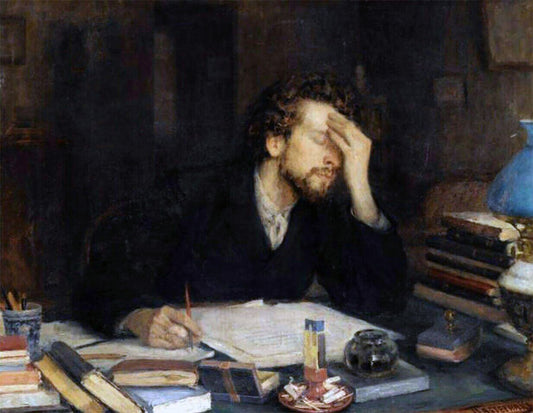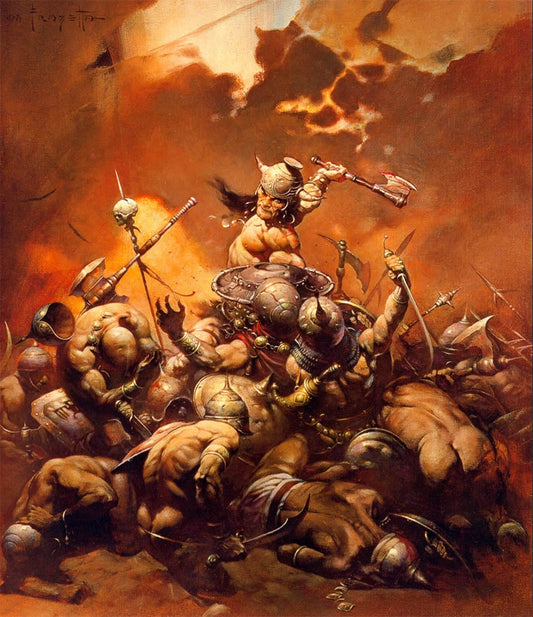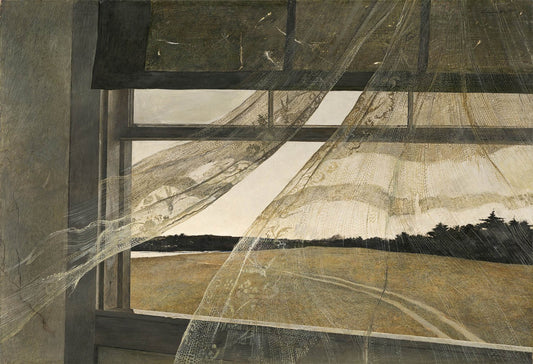Best Painters of All Time
Andreas ClaußenShare
You know, when you start choosing the ten best painters of all time, it’s like riding a bicycle with a blindfold – you will fail, the question is – when? How do you even begin to measure something like that? Is it the technique? The emotional punch to the gut? The subject matter?
There are artists who create oeuvres that are consistently great, and then there are those who painted just one masterpiece that leaves you speechless every time you see it, like that annoying song you can't stop humming.
Art is this weird, wonderful mix of feelings and ideas. What might make one person weep with joy might make another shrug and go, “Meh.” It’s personal. It’s messy. And that’s what makes this quest to name the best so thrilling and, let’s be honest, kinda impossible. But here we go anyway, diving into the chaos of art history to celebrate those who, with a brush and a bit of magic, changed the way we see the world.
To make it a bit easier for myself, in this list of the best painters of all time, I focus on the dead ones, and I do not really rank them because their value for me is ever-changing. The lessons I learn from them are not always the same. But here they are, my current best dead, but through their work vividly living, painters of all time.

Norman Rockwell: The Painter of America's Dream
Norman Rockwell, the guy who painted America—or at least the America he or we all wish existed. His work feels like stepping into a time machine to a simpler era where kids played stickball and families gathered around the dinner table without checking their phones every five seconds. Rockwell’s ability to capture everyday moments with such warmth and humor is like a warm hug from a grandparent. Sure, some critics might dismiss his work as overly sentimental, but there's something profoundly comforting in his idealized visions of small-town life. It’s as if he bottled nostalgia and painted it with a meticulous hand and a twinkle in his eye. What I personally adore about his paintings is his technique, especially how he handles materials. In many of Rockwell's paintings, you find very different objects showcasing a wide range of materials (fabric, leather, metal, wood, skin, etc.) and they look super real. Also, his comical sense for exaggeration, poses, and subjects is something very special.

Frank Frazetta: The Fantasy World's Unstoppable Force
Enter the wild, fantastical world of Frank Frazetta, where warriors are impossibly muscular, women are dangerously seductive and strong, and creatures lurk in the shadows, ready to pounce. Frazetta's art is like a heavy metal album cover come to life, full of raw energy and drama. He didn't just paint; he created epic sagas in a single frame, making you feel like you were on the brink of an adventure. His influence on fantasy art and pop culture is immense—think Conan the Barbarian, and you've got Frazetta’s fingerprints all over it. His work is a visceral reminder that art can be both beautifully detailed and wildly, unapologetically intense. He showed me (and many other artists) that great art can be more than still lifes, rich people portraits, or abstract mark-making. He brought back the power of Rubens hunting paintings, put them on steroids, and gave generations a vision for entertaining art that is produced with exceptional skill. (I have to admit that I like Frazetta’s ink drawings even more than his paintings.)
Learn more about Frazetta and his way to compose paintings here

Andrew Wyeth: Master of Quiet Realism
With Andrew Wyeth, it's all about the quiet, contemplative moments. His paintings often depict rural life with a stark, almost haunting realism. Wyeth had this incredible knack for capturing the beauty and melancholy of the everyday, turning the mundane into something almost sacred. His subdued color palette and meticulous attention to detail draw you in, inviting you to slow down and really look. It's like he's whispering, "Hey, there's beauty here, even in the simplest things." He was also a master of leaving things out and simplifying the scene. This way, his work got an overall abstract quality, which made the realistic parts even more stunning.
Learn more about Frazetta and his way to compose paintings here

Nicolai Fechin: The Texture Virtuoso
Nicolai Fechin’s work is an explosion of texture and color, almost as if the paint itself was alive. His portraits are something else—each face seems to tell a story, with every brushstroke adding to the depth of their personality. Fechin's technique is so dynamic that it feels like his subjects could step right off the canvas. His background in Russia combined with his experiences in America gave his work a unique blend of cultural influences. There's a raw, tactile quality to his paintings, as if you could reach out and feel the roughness of his brushwork. Fechin didn’t just paint people; he captured their essence with electric energy. From Fechin, I learned how much fun painting can be when you get your skills together and start to play with your medium of choice in an intuitive way.

John William Waterhouse: Dream Weaver of Myth and Legend
John William Waterhouse is like stepping into a dream of myth and legend. His paintings are filled with ethereal women and enchanting narratives, pulling you into a world where reality and fantasy blur. Waterhouse had this amazing ability to combine the pre-Raphaelite fascination with beauty and detail with a more accessible storytelling approach. Each of his works feels like a scene from an ancient tale, dripping with romance and a touch of mystery. His use of color and light makes everything look like it's bathed in a soft, otherworldly glow, inviting you to get lost in the magic of his imagination. He also created one of my favorite paintings of all time, “Hylas and the Nymphs.” What a beast.

Edward Hopper: The Poet of Solitude
I've heard someone say that Edward Hopper is a terrible painter but a great artist. I do agree. While the way he applies paint is nothing special, where he chooses to apply it is his real skill. Edward Hopper’s paintings are like snapshots of solitude, capturing the still, quiet moments of American life. There’s a sense of isolation in his work, even when his subjects aren’t alone. Think of "Nighthawks," with its late-night diner bathed in artificial light, and you can almost hear the silence. Hopper’s use of light and shadow creates a mood that’s both eerie and beautiful, making you feel the loneliness of city life or the desolation of rural America. He didn’t just paint scenes; he painted the emotions that come with them, making you pause and reflect on your own moments of quiet introspection. I like this voyeuristic eye looking through windows or around corners. It doesn’t want to be part of the image. It just wants to be there and see what is happening.

John Singer Sargent: The Portrait Maestro and Unseen Impressionist
John Singer Sargent, the master of portraiture, could capture a likeness with a flair that made his subjects almost leap off the canvas. His outdoor paintings, though, are where his work really sings. Sargent had an incredible ability to convey the texture of nature, the play of light through leaves, and the shimmer of water with seemingly effortless brushstrokes. His work is sophisticated, full of life and energy, reflecting the high society of his time while still feeling remarkably fresh. It’s like he knew his subjects intimately, and with a few deft strokes, he could reveal their inner selves to the world. He was a real professional, performing with exceptional skill and dedication. What he really loved were his outdoor scenes. There his color palette exploded, and he captured outdoor scenes in watercolor and oils like no one else. He took the best of the Impressionists (light, color, and texture) and added his great skill. What a result.

Howard Pyle: The Father of American Illustration
Howard Pyle, often called the father of American illustration, had a knack for making history come alive with his vivid storytelling. His illustrations aren't just pictures; they're portals to epic tales of knights, pirates, and adventurers. Pyle's work in books and magazines brought a richness and dynamism that captivated both young and old readers. His teaching legacy, mentoring future giants like N.C. Wyeth, cemented his influence on American art. There's a cinematic quality to his illustrations—each one a carefully composed scene full of drama and detail. Pyle's ability to blend historical accuracy with imaginative flair makes his work timeless, a thrilling journey back to the days of yore. And if you want to learn how to compose images—Howard Pyle is the way to go.

Rembrandt: The Master of Light and Shadow
Ah, Rembrandt—one of the towering giants of art history. His mastery of light and shadow, known as chiaroscuro, transformed portraiture and storytelling on canvas. Rembrandt had this uncanny ability to delve deep into the human soul, capturing not just the outer appearance but the very essence of his subjects. His self-portraits are like a visual autobiography, chronicling his journey through life with unflinching honesty. From the tender "The Night Watch" to the poignant "The Storm on the Sea of Galilee," Rembrandt's work is imbued with a profound empathy and a keen observation of humanity. Each brushstroke feels deliberate, a testament to his genius in creating depth and emotion that resonates centuries later. Rembrandt, through his glorious light, was able to make ugly people look beautiful. And that is a thing.

Richard Schmid: Alla Prima Painting Extraordinaire
Richard Schmid, a modern master of alla prima painting, brought a fresh, vibrant approach to contemporary realism. His technique, which involves completing a painting in a single session, showcases his extraordinary skill and intuitive understanding of drawing, edges, and color. Schmid's work is both technically brilliant and emotionally compelling, often capturing fleeting moments with breathtaking precision. His landscapes, still lifes, and portraits are infused with a sense of immediacy and life, as if you’re witnessing the scene firsthand. His legacy is one of excellence, passion, and a relentless pursuit of artistic truth, inspiring countless artists to embrace the beauty of painting directly from life. This is something I need to do much more often in the future, because I know there are still some gold nuggets hidden in the experience of unfiltered, direct observation and painting from life.

Conclusion - Best Painter of All Time
Ahhh, just after finishing the text, a lot of other great painters came to mind: Caspar David Friedrich, Anders Zorn, Adolph Menzel, Joseph Christian Leyendecker, Arthur Melville and the master of light, Joaqiun Sorolla. How could I miss him? He deserves his own blog post.

But, what do these ten artists I chose - Norman Rockwell, Frank Frazetta, Andrew Wyeth, Nicolai Fechin, John William Waterhouse, Edward Hopper, John Singer Sargent, Howard Pyle, Rembrandt, and Richard Schmid - tell us about my taste in art? Let's dive into this eclectic mix and see where it takes us.
First off, these artists span quite a range of time periods and styles, from the golden age of Dutch painting with Rembrandt to the modern flair of Richard Schmid. We're talking centuries of artistic evolution here, yet there's a thread that weaves through them all. Each one of these artists has this incredible ability to tell a story, to capture a moment in time with such vividness that you almost feel like you’re right there, living in their painted worlds.
Many of them worked within the realms of realism and illustration. Rockwell, Hopper, and Wyeth, for instance, had this knack for capturing the essence of American life, each in their unique way. Rockwell’s nostalgic Americana, Hopper’s quiet isolation, and Wyeth’s poignant simplicity all offer different lenses through which to view the everyday. These artists were chroniclers of their time, much like how my astronaut explores the remnants of a flooded world, piecing together a narrative from what remains.
Then there’s the fantasy and mythological allure of Frazetta and Waterhouse. Frazetta’s fantasy art is a high-octane adventure, full of muscular heroes and perilous quests, while Waterhouse's dreamy, ethereal scenes transport you to a world of legends and romance. Both use their art to transcend the ordinary, much like my own work aims to do with a humorous twist on a post-apocalyptic scenario.

Fechin and Sargent both bring a dynamic intensity to their portraits, capturing the essence of their subjects with incredible vibrancy. Fechin's work is an explosion of texture and color, each brushstroke imbued with a raw, tactile quality that makes his portraits feel almost alive. Sargent, on the other hand, combines elegance and sophistication, using light and shadow to reveal the inner life of his subjects. Both artists demonstrate an intimate understanding of their medium, blending technical mastery with an expressive, almost instinctive touch. Their ability to convey such presence and emotion in their work is something I strive for in my own paintings, where bold textures and strong visuals are used to bring the narrative to life.
Howard Pyle and Richard Schmid, though from different eras, share a dedication to technique and teaching. Pyle’s illustrations brought stories to life with an almost cinematic quality, while Schmid’s alla prima works capture the fleeting beauty of a moment. Their influence on future generations of artists is something I deeply admire and hope to emulate through my own explorations and expressions.

Rembrandt, the grand master, with his profound depth and mastery of chiaroscuro, sets a high bar for capturing the human condition. His work is timeless, a mirror reflecting the soul. This pursuit of timelessness, of creating something that resonates deeply and persistently, is at the heart of what I do.
What ties all these artists together, beyond their undeniable skill, is their ability to evoke emotion and tell a story, whether through the quiet corners of American life, the epic sagas of fantasy, or the deeply personal realms of portraiture. They all blend technical brilliance with a rich narrative quality, inviting viewers to step into their worlds and experience their visions.
And that’s what I aim to do with my own work—using humor, irony, and bold visuals to create a narrative that resonates, a modern-day saga where an astronaut's survival becomes a canvas for exploring our own cultural remnants. These artists inspire me to blend technique with storytelling, to use every brushstroke to build a world that’s both compelling and thought-provoking.



